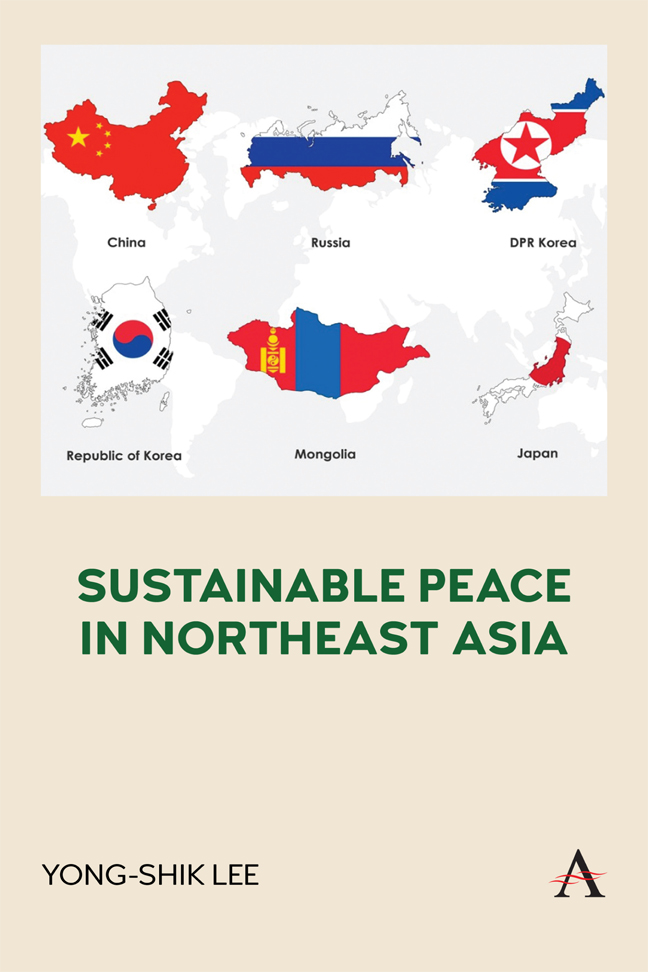Book contents
- Frontmatter
- Dedication
- Advanced Reviews
- About the Author
- Contents
- Figures
- Tables
- List of Abbreviations
- Foreword
- Preface
- Acknowledgments
- 1 Introduction
- 2 The Heritage from the Cold War—North Korea and the Nuclear Crisis
- 3 The New Asian Paradigm or Return to the Old Asia—Rise of China and its Role in the Region
- 4 A New Balancer in the Region? South Korea at the Crossroads
- 5 A Power With Rising Concerns: Escalation of Tensions Between Japan and its Neighbors
- 6 Insiders from the Outside: The United States and Russia
- 7 A Hidden Player: Mongolia and its Role in the Power Dynamics of Northeast Asia
- 8 Pathway to Peace and Stability in Northeast Asia
- Notes
- Bibliography
- Index
- Frontmatter
- Dedication
- Advanced Reviews
- About the Author
- Contents
- Figures
- Tables
- List of Abbreviations
- Foreword
- Preface
- Acknowledgments
- 1 Introduction
- 2 The Heritage from the Cold War—North Korea and the Nuclear Crisis
- 3 The New Asian Paradigm or Return to the Old Asia—Rise of China and its Role in the Region
- 4 A New Balancer in the Region? South Korea at the Crossroads
- 5 A Power With Rising Concerns: Escalation of Tensions Between Japan and its Neighbors
- 6 Insiders from the Outside: The United States and Russia
- 7 A Hidden Player: Mongolia and its Role in the Power Dynamics of Northeast Asia
- 8 Pathway to Peace and Stability in Northeast Asia
- Notes
- Bibliography
- Index
Summary
Northeast Asia, a major region in Asia covering China, Korea (South and North Korea), Japan, Mongolia, and the Southeast corner of Russia, is economically one of the most vibrant areas in the world, with a rich array of economic opportunities. Yet, it is simultaneously one of the world's most politically and militarily unstable regions, creating a global security risk. This risk was made apparent by North Korea's nuclear crisis, which was followed by a series of its nuclear tests and ballistic missile launches from 2016 to 2017. Although the worst-case scenario may have been avoided by a summit meeting between the heads of South and North Korea on April 27, 2018, and another summit between the United States and North Korea on June 12, 2018, substantial uncertainty and the risk of a major military conflict remains.
Although less dramatic and visible to the outside world, other political and military tensions among constituent countries in Northeast Asia, with their deep historical origins dating back centuries, are also significant. These tensions have been demonstrated by persistent territorial disputes, lack of reconciliation on the question of war crimes during World War II, increasing disparities in political influence and military power among Northeast Asian countries as a result of China's ascension, and deepening uncertainty in the region due to the potential instability of North Korea (caused by its confrontations with South Korea and its allies, internal political issues, and economic problems). These problems carry with them the potential to destabilize Northeast Asia, the effects of which would have a substantial global impact.
This book examines the causes of these complex tensions in Northeast Asia and their underlying political, historic, military, and economic developments. It further discusses their political-economic implications for the world and explores possible solutions to build lasting peace in the region. This book offers a unique approach to these important issues by examining the perspectives of each constituent country in Northeast Asia: China, South and North Korea, Japan, and Mongolia, and their respective roles in the region. Major global powers, such as the United States and Russia, have also closely engaged in the political and economic affairs of the region through a network of alliances, diplomacy, trade, and investment. The book will discuss the influence of these external powers, their political and economic objectives in the region, their strategies, and the dynamics that their engagement has brought to the region.
- Type
- Chapter
- Information
- Sustainable Peace in Northeast Asia , pp. xxiii - xxivPublisher: Anthem PressPrint publication year: 2023

